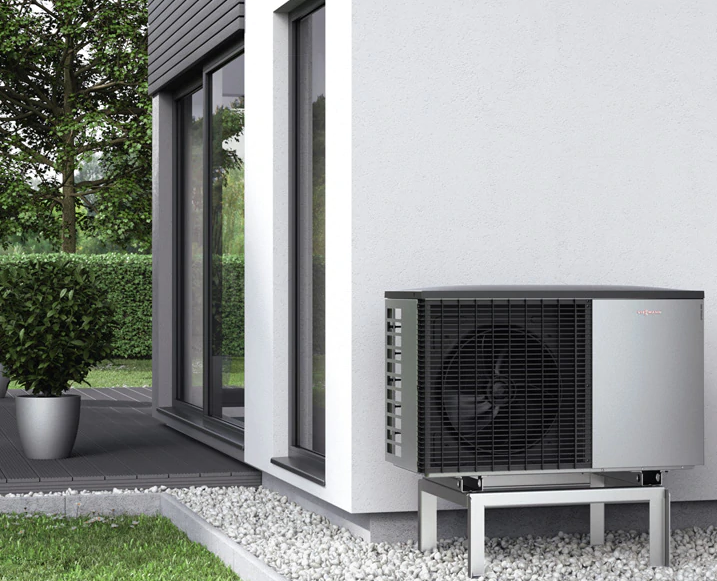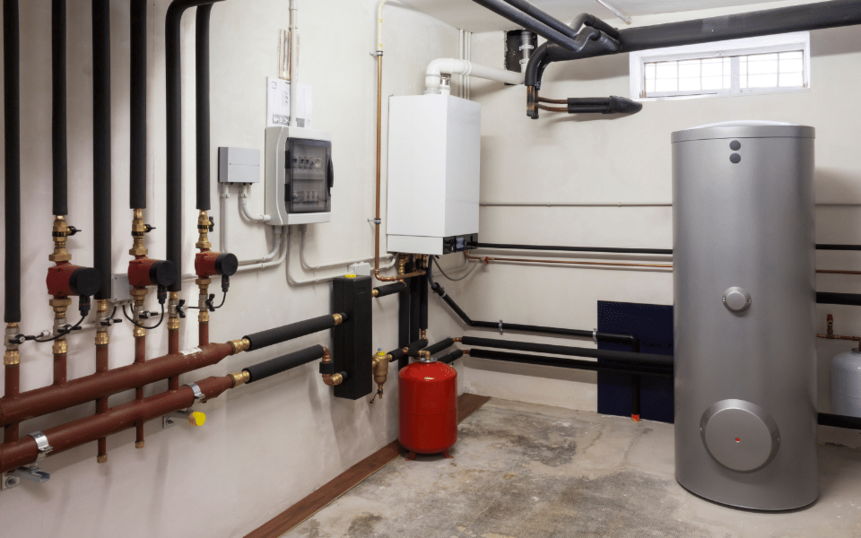
Check if you need a permit
You sometimes need an environmental permit to install an outdoor unit. Inquire with your municipality about the rules (which may differ per municipality). You can place a small outdoor unit in the garden or on the roof without a permit. Small means that the outdoor unit is less than 1 meter high (including base) and the surface area (width times height) is a maximum of 2 square meters. But: if you live in a monument or protected cityscape, always check whether you need an environmental permit.
If you opt for a ground source heat pump, you must always report this to the Environment Desk. The municipality designates interference areas. If you want to install a ground heat pump in such an interference area, you may need a simple permit (called an OBM permit).
See if you need a heavier connection and distribution box
Many (older) houses have a 1x35 Ampere connection. This is sufficient for most hybrid heat pumps (2 to 5 kW). For a fully electric heat pump you usually need a heavier connection (3x25 amps). Newer houses usually already have this. If you also cook on induction and have an electric car that you charge at home, you may need 3x35 amps. Ask the installer if this is necessary. And arrange it in time with the grid operator.
Do you want to know what type of connection your home has? If your house was built in or after July 2011, it has a 3x25A connection as standard. Was your house built before July 2011? Then look for the meter number of the meter in your meter cupboard. You can then enter your meter number and zip code with your network operator (often online) to find out your connection. Don't know who your network operator is?
The network operator charges one-off costs for the reinforcement, approximately € 200. In addition, you must replace or have your meter cupboard expanded and have separate groups installed for the heat pump and for the induction hob (if you take that, you can do without a gas connection, which saves on annual standing charges). The amount you pay annually to your energy company (fixed charge) is the same for 3x25 Ampere as for 1x35 Ampere and will therefore not increase. The annual costs are higher for 3x35 amps.
Check whether you are entitled to a subsidy
You can receive a subsidy if you buy a heat pump. The amount of this ISDE subsidy depends on the type of heat pump and its capacity.
Check the heating plan for your neighborhood
Your municipality has a heating plan ('heat transition vision'). This states when it is your neighborhood's turn to become more sustainable. For the neighborhoods that will be affected first (before 2030), the municipality will examine, together with the grid operator, housing association, tenants and homeowners, what alternatives there are to natural gas. This could, for example, be a heating network, a gas network with green gas or an enhanced electricity network for electric heat pumps. Ask your municipality what plans there are for your neighborhood, and over what period. It is a shame to buy a heat pump now if you will be connected to a heating network in a few years. Better insulation is always good. Find company
Find company
When you buy a heat pump, always choose a skilled installer with the correct certificates. Proper installation of your heat pump is important for it to operate energy efficiently. To receive the subsidy, you must also be able to demonstrate that the heat pump was installed by a building installation company.
Pay attention to certifications and recognition
Heat pumps with synthetic refrigerants must be filled, installed and maintained by a technician with an F-gas certificate (guideline BRL 200). This is legally required to prevent refrigerant from being released due to sloppy work. These refrigerants have a strong greenhouse effect. The company itself must have the BRL 100 certificate. BRL certification is not required to install a monoblock heat pump (indoor or outdoor) or a heat pump with natural refrigerant (this may change in the future).
Will you receive a new hybrid heat pump including a new central heating boiler? Or will your current boiler be moved? The installation company is then obliged to have a CO-free certificate. If the heat pump is only added to the existing central heating boiler, no certificate is required.
Companies that design, install and/or maintain installations for ground source heat pumps must be certified for this (guideline BRL 6000-21 for the above-ground part and guideline BRL SIKB 11000 for the underground part).
Offertes aanvragen
A heat pump fits in almost every home. Which heat pump best suits your home depends, among other things, on how well your house is insulated and whether your heating system can heat the home well and comfortably with low temperatures. With the heat pump selection aid you can see whether your home is already suitable for a fully electric heat pump.
After purchase
Heating at a lower temperature has an advantage: you have very even heat in your home. It does work a bit slower. You therefore have to heat your house a little differently than you are used to. With a fully electric heat pump, you set the thermostat at most 1 or 2 degrees lower at night than during the day. Because your house is well insulated (and it is, otherwise you wouldn't start with a fully electric heat pump), it doesn't lose that much heat at night.
In the morning, the heat pump can heat your house again easily and economically. If you set the thermostat much lower at night, the heat pump has to work much harder to heat the house again. This costs more energy, because the heat pump then has to work with a higher water temperature, which is much less efficient.
If you are going to be away from home for longer, for example on holiday in the winter, you can set it to 15 degrees. But keep in mind that warming up on your return will take a long time.
With a hybrid heat pump, the night temperature you set with the thermostat depends on the insulation of your home. Just like with a full heat pump, you can set the thermostat 1 or 2 degrees lower at night. Your house is then heated in the morning by the heat pump (not by the central heating boiler). If you set the thermostat lower by more degrees, heating up with the heat pump will take too long and the boiler will kick in. This usually has a greater climate effect than keeping warm with the heat pump. Exception: in poorly insulated homes it may sometimes be better to set the night temperature to 15 degrees. Your house is then heated in the morning by the central heating boiler instead of the heat pump, but that is sometimes more energy efficient than running a hybrid heat pump at higher night temperatures. So find a balance between the desired comfort and energy consumption. By heating up more slowly, you use the heat pump most efficiently (and use less gas). So also ensure better insulation, because then you get more out of your heat pump.



